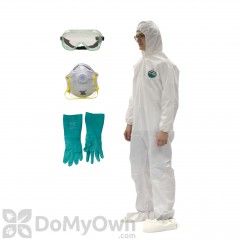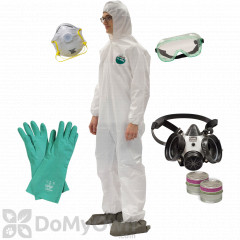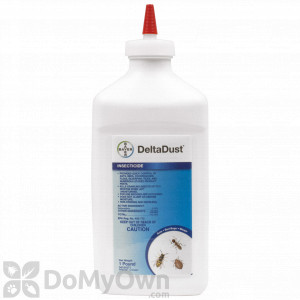The category of "wasp" includes the common paper wasp, hornets, and yellow jackets. The following identifiers describe the northern paper wasp:
- ¾ to 1 inch long
- Narrow waist with long legs
- Reddish-brown to dark brown or black in color
- Yellowish markings on the abdomen.
- The paper wasp constructs a paper-like nest that looks like a tiny umbrella suspended by a short stem.
Behavior & Habitat
Wasps are social insects that live in colonies. Paper wasp colonies contain three castes: workers, males, and queens. Wasps make their paper-like nests in branches, under decks, and hanging from the eaves of houses.
Feeding Habits
Adult wasps feed mainly on nectar and other sugary substances such as honeydew and the juices of other fruits. Wasps and hornets feed their young an almost exclusive diet of partially chewed insect parts, including caterpillars or flies.
Life Cycle
Fertilized queen wasps usually emerge from stumps, hollow logs, in leaf litter and soil cavities during the early spring. A nest site is selected and a paper nest is built wherein the eggs can be laid, one in each hexagonal cell. Older larvae reside in the center with the younger larvae near the edges. The queen will begin feeding the larvae as soon as the eggs hatch. The larvae remain in their cells which are soon covered with silk domes, where they will form pupae. Finally, small infertile female wasps will emerge as "workers" during mid-June to take on the tasks of foraging for food, nest expansion, taking care of the queen, and defending the colony.
Damage
Wasps have a lance-like stinger and can sting repeatedly. The sting of a wasp can be very painful, and may even be fatal to particularly sensitive individuals. If reaction to a wasp sting seems unusual or severe in any way, you should contact a physician.
Basic Prevention & Control :
- Spray Suspend SC or Demon WP in troublesome areas
- To get quick knock-down of the nest, carefully approach the nest AT NIGHT (all the wasps should be inside sleeping and less aggressive) and spray Wasp Freeze Aerosol Spray into the nest opening.
- When a wasp approaches you, put your hands in front of your face and move away slowly. Never swing your arms or run as this may increase the chances being stung.
View all of our Wasp Killer products.
For more detailed information on Wasp prevention and control, see How To Get Rid of Wasps





